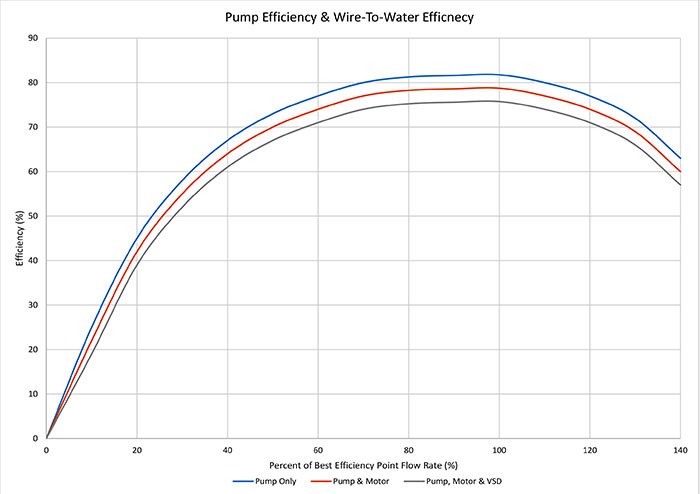Learn VSD advantages and misconceptions.
12/26/2018
How much will pump efficiency be affected with the addition of a variable speed drive? It is a misconception that adding a variable speed drive (VSD) to a pump will increase its efficiency. When considering the wire-to-water efficiency of the pump, motor and VSD, each component that is added lowers the wire-to-water efficiency at a respective flow rate because each component has losses associated with it. Image 1 illustrates this concept showing the pump efficiency being the greatest, then the wire-to-water efficiency decreasing at the respective flow rate when the motor and VSD are added to the extended pump product.
 Image 1. Pump efficiency and wire-to-water efficiency of pump, motor and VSD (Images courtesy of Hydraulic Institute)
Image 1. Pump efficiency and wire-to-water efficiency of pump, motor and VSD (Images courtesy of Hydraulic Institute) Image 2. Essential power for variable speed control and wasted power for throttling (top) and bypass control (bottom)
Image 2. Essential power for variable speed control and wasted power for throttling (top) and bypass control (bottom) 
